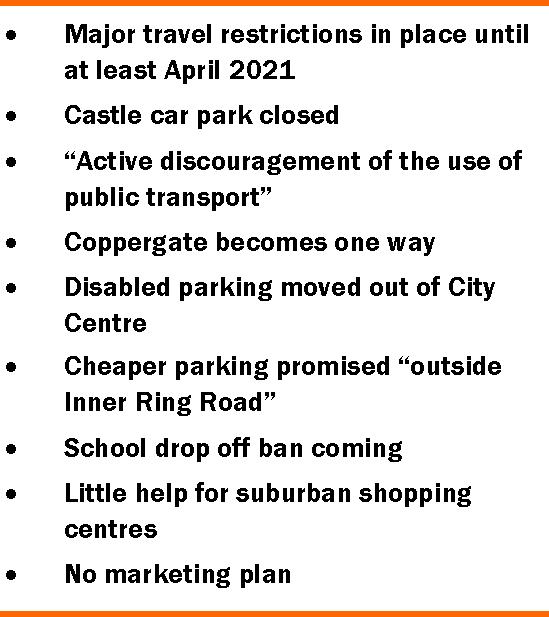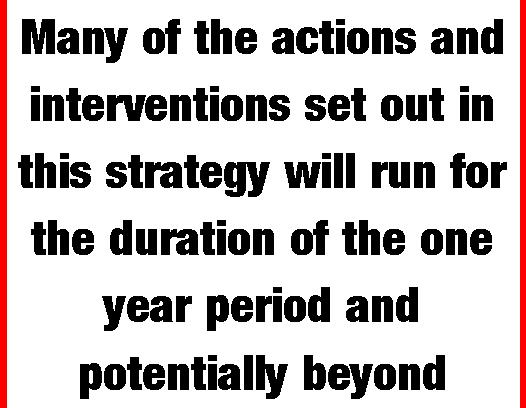Coppergate to become one way.
Castle car park to be closed

The York Council has published for the first time its post lockdown strategy. The report was considered and agreed today. There was no prior consultation.
The Council has decided to make Coppergate one way (east to west) cutting one of the City’s key bus routes for the next 6 months “or until a vaccine is available”. Cyclists will be able to continue to use the street in both directions although, at the “pinch point” near the Coppergate centre entrance, this may compromise social distancing objectives.
The Council strategy says there will be, ”Active discouragement of the use of public transport and the promotion of walking and cycling”. (Paradoxically the Council has also announced today a bid for funding for more electric buses)
The Council isn’t expecting many retail workers to return to City centre jobs much before December. Restaurant and pub (hospitality) workers may be out of a job for even longer.
More local and county residents are expected to start to visit the City centre from the autumn together with smaller numbers of day visitors from other parts of the region. Later they will be joined by tourists from other parts of the country.
International tourists are not expected to return in any numbers before the late Spring of 2021.

The “strategy” pointedly does not propose a marketing plan aimed at actually promoting the City, and its key visitor/retail economy, over the next few months.
The Council leaders plan involves the closure of the key (for the retail economy) Castle car park without its planned multi storey replacement being opened at St Georges Field.
The notoriously unreliable “pay on exit” mechanisms will also be rolled out to all car parks – negating the social distancing preferred option of contactless payment via smart phone Apps.
The strategy offers little for the suburbs. The option of encouraging devolved open air markets is not even mentioned. There is no publicity support on offer for neighbourhood businesses. More cycle parking is, however, promised.
Many may have sympathy with a key message included in the strategy which “proposes to invest and make bold interventions to create new networks of park and cycle hubs, priority cycle routes, subsidised cycle hire and cycle parking to prioritise active travel”.
Those reading further will see that there are no actions proposed to address the natural barriers to two wheeled transport (poor infrastructure, uneven highways, obstructed paths, etc.) Much less does the statement recognised that some sections of the community because of distance, fitness, luggage or just poor weather, simply don’t have a realistic two wheeled travel option.
No forecasts of modal change are included. The Council simply doesn’t seem to know what effect implementing such a rag bag of tactical polices might have.
So we judge the document to be a profoundly superficial and disappointing proposal shuffled into the light of day with no prior consultation and apparently lacking even sensitivity to the difficult choices now facing many sections of the community.
Hopefully work will have already started on producing something more convincing. First step should be to regain the trust and supportl of local residents.

